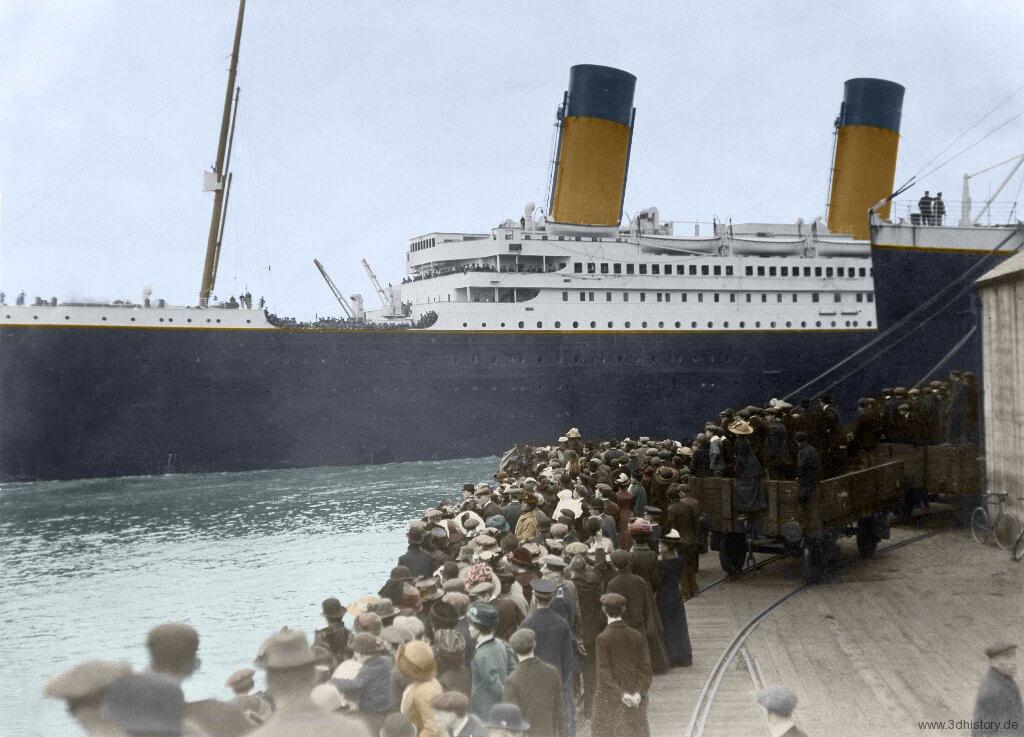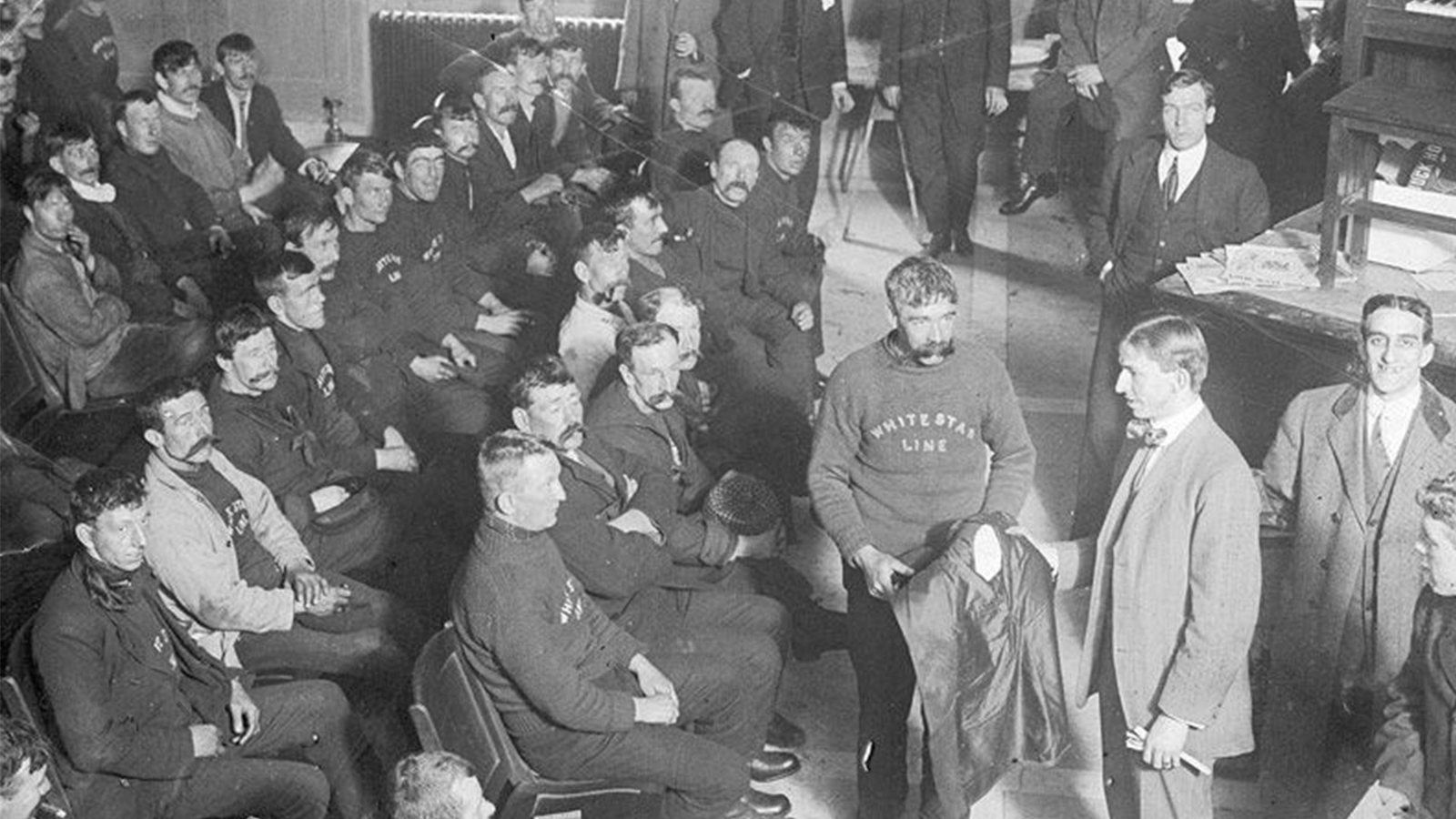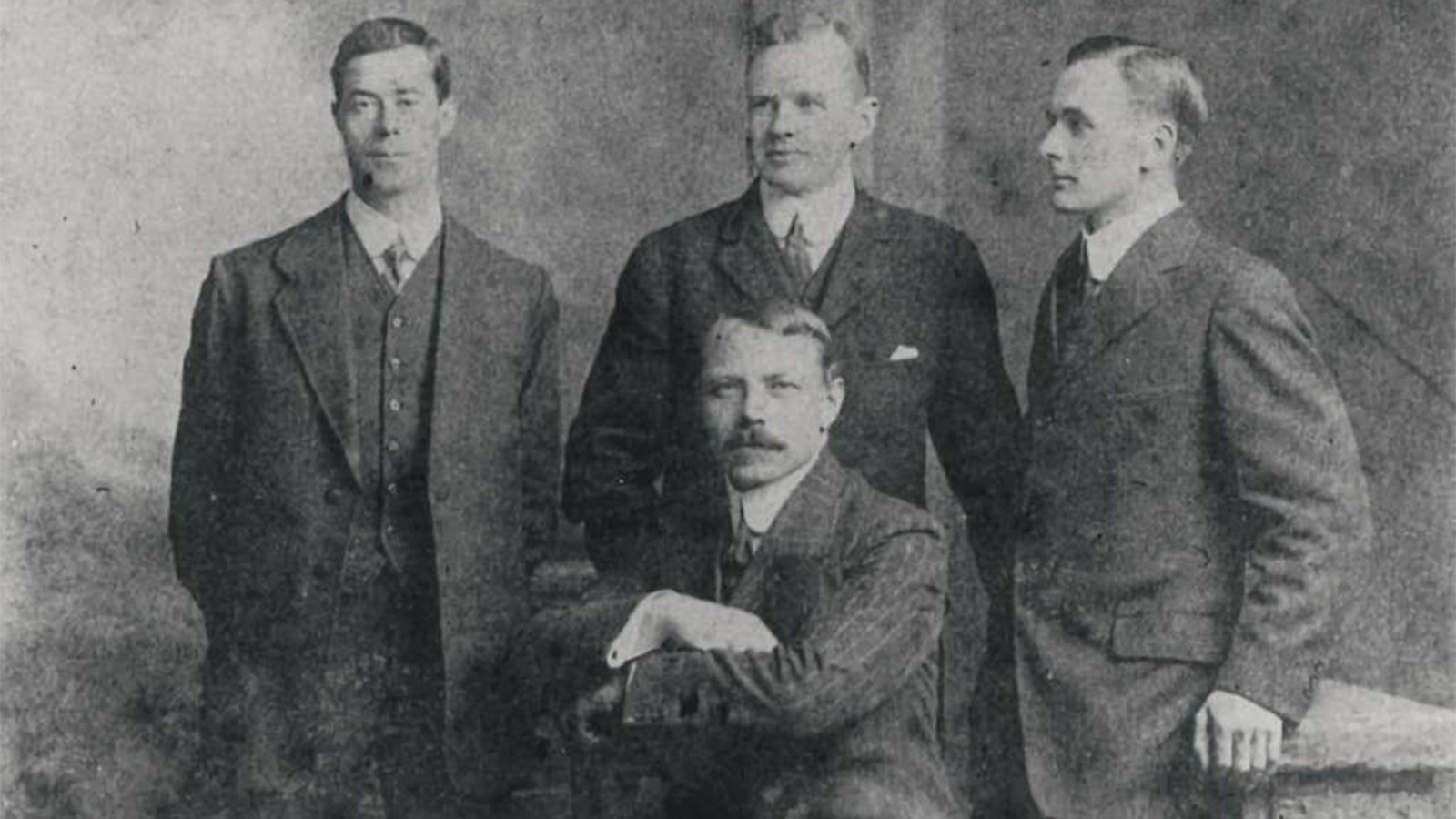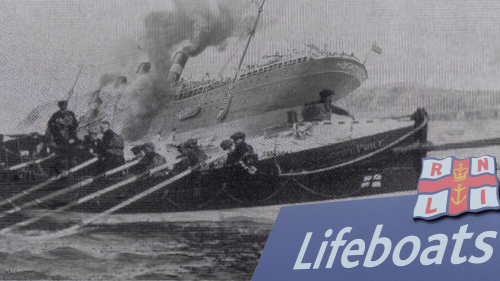Titanic's mystery crewman: The undead Thomas Hart
Among the crew lost on RMS Titanic was a fireman named Hart. Except, one month later, he miraculously turned up on his mother’s doorstep - claiming his discharge book had been stolen. Historians have never determined who boarded in Hart’s name and died for their deception, so we've gone in search of an answer
As pre-voyage mayhem engulfed every corner of White Star Line’s operation, J. Bruce Ismay cracked the whip. He was determined that all attributes for RMS Titanic’s highly-publicised maiden voyage were organised. As chairman and managing director of the company, he had staked his reputation on a successful journey.
His task had not been an easy one. Yet, despite a national coal strike and the mounting political domino effect, Titanic was stocked with fuel and provisions. The itinerary was set. Fixtures and fittings had been installed to the highest standard. And, perhaps more importantly, the crew were in place.
After all, these highly-trained individuals would be the ones who epitomised the brand.
Except, as RMS Titanic slowly swung out of her Southampton berth on a riotous crest of celebratory clamour, three brothers feverishly pushed through the vast dock-side rabble amid a flurry of panic and adrenaline. Having signed up as firemen, the Slade brothers – Bertram, Tom and Alfred – had temporarily disembarked the ship to enjoy a quick pint of Guinness.

With full intent to jump back on board, they missed their chance by only a few moments; courtesy of a slow train in their path. Reprimanded at the time and ultimately shamed, it would turn out that they were the lucky ones.
Most of the crew aboard RMS Titanic signed up on Saturday, April 6, 1912. Even as White Star Line employees, it was considered the chance of a lifetime to sail on such a ship. Little else cut the mustard as a bragging right.
The Slade brothers weren’t the only ones to escape Titanic’s fateful voyage. When the White Star Liner perished on that cold morning of April 15, 1912 – some 24 of the original crew had not been present.
Of those, no fewer than ten were noted as having “failed to join”, while others “left by consent”, deserted or found themselves discharged and transferred.
In a bizarre twist of fate, one crewman was noted as having been present and perished during that fateful voyage – yet, the media highlighted that something wasn’t right. Someone had reportedly come back from the dead, just in time for tea.
Thomas Hart: Titanic’s mystery crewman
An illustration published (above) after the loss of RMS Titanic portrayed a lonely figure preparing to die. Doused in fine sketch charcoal, a fireman stands on deck, knowing he has no entitlement to presence in a lifeboat, and seemingly accepts his fate.
Some say this subjugated figure is Thomas Hart; a name shrouded in mystery and intrigue. Little is known about Hart, except that someone of that sign-on name was apparently taken into the abyss. Courtesy of subsequent activity and media reports, his identity remains disputed.
A month after the Titanic disaster, Hart’s mother supposedly answered the door to find her ‘deceased’ son standing across the threshold – alive and kicking. It all sounds very Hollywood, with headlines of the New York Times screaming ‘Thought to be lost – Alive’.
The grabber was misleading, however, as the sub-heading proclaimed ‘Another Man Signed on the Titanic Under Thomas Hart’s Name’. The explanation – as told by the New York Times – detailed how Hart’s discharge book had been stolen, before a mystery figure used the paperwork to board RMS Titanic under Hart’s assumed identity.
Of course, urban legend has since expanded this tale, making out that Thomas lost the book ‘while drunk’ and had then ‘wandered around in a daze’, too ashamed and embarrassed to head home. Yes – that’s right – for a whole month. That’s one hell of a hangover.
So, what’s the tale here then? Taking only a moment to pick holes in that narrative ultimately results in scepticism. Whereas the Slade brothers were real, is the Thomas Hart scenario purely fiction from the media-driven fascination around White Star Line’s unsinkable pride?
The real Thomas Hart
To debunk all the added extras and figure out the real story behind Thomas Hart’s remarkable survival, you’ve got to go digging for the origin of the story. Which, contrary to belief, is not the prolific New York Times.
The first reports came from Liverpool and were featured in the Merseyside Daily Post newspaper, which then sparked other ‘pick-up stories’ according to Encyclopaedia Titanica.
The Post reported:
Messrs. Quilliam, of Liverpool, solicitors, acting on behalf of relatives of Thomas Hart, marine fireman, of Liverpool, supposed to have been lost in the disaster, have been informed by his mother that her son has turned up. He told her that he had had his discharge book stolen from him.
Someone evidently signed on the Titanic with Hart’s name and credentials, and it was he, and not Hart, who was drowned.
Then, if you plunge into the Titanic's extensive crew list, there’s no sign of any fireman engaged as Thomas Hart. What can be found elsewhere in the records is the surname ‘Hart’ and a prefiguring initial, along with an address of 51 College Street, Southampton. More on that later.
The mystery is deepened further in that no further correspondence regarding Thomas Hart appeared in the media. A lack of evidence regarding the loss of Hart’s discharge book adds to further incredulity.
The final nail in this urban legend’s coffin comes from location – Hart was a resident of Liverpool, and had never gone near Southampton. As a seagoing chap, he had obviously replaced the discharge book to ensure work could be found.
Or had he?

A complication arises here, as discharge books did not assert employment rights. Far from offering the protective qualities of a passport, a huge swathe of employees onboard Titanic were hired without a discharge book being produced. The official White Star Line documentation proves such a notion.
Then there’s Hart’s recorded age on those White Star Line records. He’s listed as 49 years old, meaning that – unless Hart’s mother gave birth as a pre-teen – Mother Hart had already surpassed the average life expectancy for the era.
Not impossible for her to remain above ground, sure, but working-class families sadly didn’t enjoy the longest of prevailing years. What remains impossible, however, is for one individual to have two dates of birth, seventeen years apart.
The person who signed his surname as Hart when boarding Titanic was almost 50, whereas newspapers sold a story where someone far younger had returned home. After all, why would a world-weary 49-year-old need a heart-rending reason to visit his ageing mother?
Just to complicate matters, the name ‘Thomas Hart’ does show up as a ship’s fireman during a sailing of the SS Scotian on June 26, 1918, from Liverpool to New York.
Ellis Island records list Thomas as 39 years old at the time, having been born in 1879 – making him only 32 by the time the Titanic sank.
These ages do not align between fact and fiction, with further evidence within Scotian crew manifests suggesting that Thomas Hart was born during the second quarter of 1879.
Only one such person was born in Liverpool at that time, and the subsequent 1891 census established that he was 12-years-old and living at 7 Florence Road, Walton-on-the-Hill, Liverpool.
And this is where it gets interesting.
Holes in the plot
The media certainly fed the flames of the story, with journalists misinterpreting facts or simply fabricating aspects that sounded plausible. For example, the 1891 census listed Thomas Hart’s mother as a woman called Jane, who had become a widow by the equivalent census of 1901.
Her husband had seemingly died at sea, with her son – Thomas, now 22 years of age – working as a bricklayer. The family had moved to 156 Rice Lane, in the same suburb of Liverpool.
Jane, now 55-years-old in the 1911 census, continues to live at the same address with her daughter, as Thomas has taken up the calling of ship’s fireman.
With Thomas’s father claimed by the ocean sometime between 1891 and 1901, Jane fulfilled the newspaper profile of a mother concerned for her son, fearing another blow after losing her husband in similar circumstances. It all made for epic melodrama to capitalize on the blazing topic of the day.

But there is still one missing piece of the puzzle, and that’s the lack of consistency regarding address and city. Thomas Hart hailed from Liverpool – so where did the 51 College Street, Southampton abode stem from?
The answer comes from the census of 1911 (somewhat of a trend here), where Senan Molony of Encyclopedia Titanica spotted a 52-year-old ship’s fireman named James Hart – not Thomas – living as a lodger with a crane driver and his wife and daughter.
White Star Line documentation showcases James' previous ship as the Olympic and could expect to earn monthly wages of £6 (worth £561 by modern standards).
Through the misinterpretation of an initial, everyone got the wrong idea – not helped by the lack of contact between Jane and Thomas in the run-up to April 1912. In fact, it was a mother’s panic that really set the whole affair off.
Thomas Hart: The truth
Thomas had not been in Liverpool for some time before Titanic set sail, and with news filtering through society about missing loved ones having perished with the ship, the Liverpudlian Mrs. Hart rightfully bore her concerns.
She contacted the solicitors for White Star Line to try and uncover more information, as there’s a swirling notion that Thomas drowned in the North Atlantic.
She became adamant, and seemingly convinced herself that her son has died akin to her husband – just as Thomas appears at the door; not in Southampton, but at 156 Rice Lane. He likely asked what was for dinner, rather than providing ghostly musing about his watery fate.
Mrs Hart scrambled to eat humble pie after sending the solicitors on a wild goose chase. In their eyes, this woman was a gold digger and had provided a sorry excuse for her misapprehension of Thomas’ demise. There would be no cash payout, and they sought to make an example of her.
The story leaked perhaps by the solicitors themselves, but the details were misquoted and the entire tale became a fantasy of kitchen-sink-drama. However, the newspaper editors adored the story, and without checking the truth, found ways to ensure sales hit record numbers.
No questions are asked. The printers whirred into life, and the story entered the status chamber – set to give researchers headaches for decades to come.
Thomas Hart (1879 – 1937)
Thomas Hart was alive and well on April 15, 1912, never having sailed on the Titanic. He would later take to sea as a fireman on ships between Liverpool and New York, but whether or not he lost his discharge book remains a distraction.
Nobody signed on to RMS Titanic under the name ‘T. Hart’ – there was no imposter, even if the morbid sections of our nature strongly wish the story were true.
So, what of the age discrepancy of Titanic fireman James Hart? It’s most likely that Mr Hart, of 51 College Street, used his own discharge book and knocked three years off his actual age – as the census debunks his claim of 49 years old.
He was, in fact, 53. 'De-ageing' was a common action of the time, to prevent ageism from preventing employment, rather than a vanity project. Needless to say, none of this helped save James from a cold grave in the North Atlantic.
Thomas Hart would survive RMS Titanic by a quarter of a century, succumbing to Broncho-pneumonia on March 5, 1937. It’s likely that his fatal illness was caused by the inhalation of silicate particles while stoking the boilers of history’s finest ocean liners, alongside a smoking habit.
Many of his ilk met the same fate, slowly killing themselves as first-class passengers relaxed, and the likes of J. Bruce Ismay prowled the top decks in search of vanity-appeasing activities.
While Ismay has gone down in history as one of humanity’s greatest villains, the likes of Thomas and James Hart have almost been etched out from the annals of history.
It's our job to keep the story of these heroes very much alive, just as the legend of Titanic continues to thrive in our contemporary society. Spread the word - Thomas was not undead, because he never drowned in the first place.
